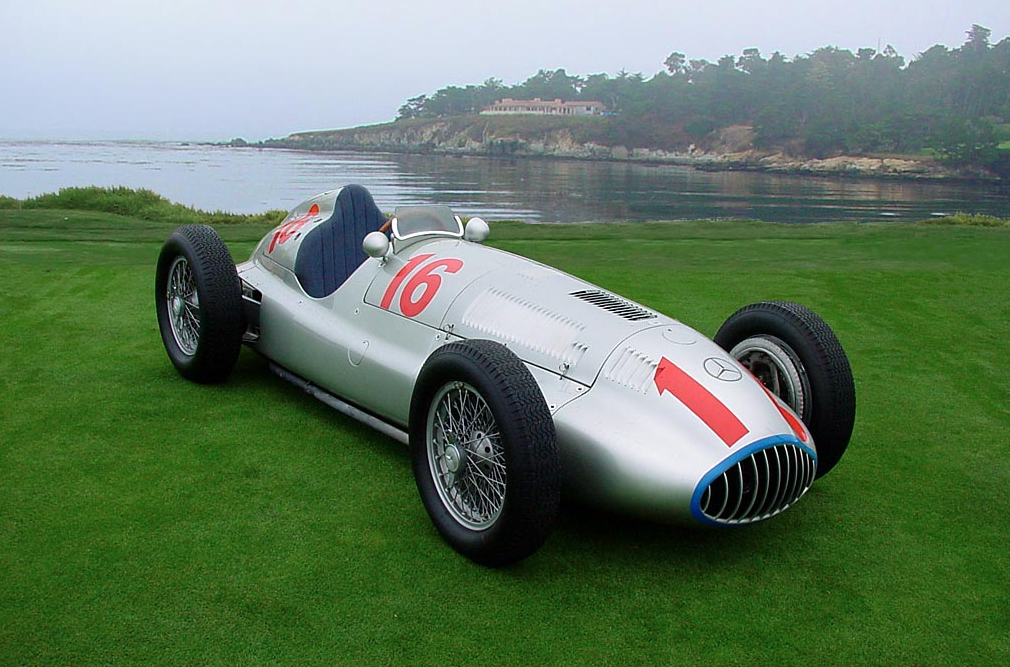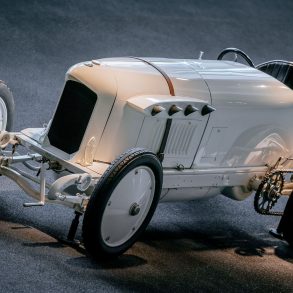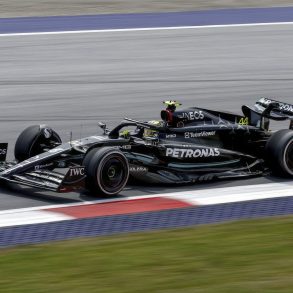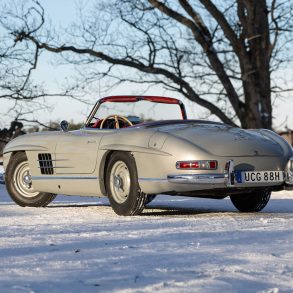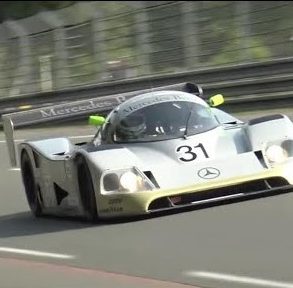Mercedes W 163
Car: Mercedes W163 / Engine: 600 V12 / Maker: Daimler-Benz / Bore X Stroke: 67 mm X 70 mm / Year: 1939 / Capacity: 2,962 cc / Class: Grand Prix / Power: 484 bhp at 7,500 rpm / Wheelbase: 107.5 inches / Track: 58.1 inches front, 55.6 inches rear / Tires:5.50 x 19 front, 7.00 x 19 rear / Notes: Mercury filled exhaust valves; 4 per cylinder with 2 stage supercharging.
There is some question as to whether the W163 can even be called a separate model from the W154 since the 163 actually refers to the new M163 engine which was also used on the W154 for the 1938 season. That engine was fueled by a witch’s brew of 86% methyl alcohol, with nitro-benzine, acetone and sulphuric ether mixed in giving the engine a whopping 2 mpg. Their rival literally had to “eat their fumes”. 105 gallons were carried in two tanks, one in the tail and the other under the driver’s seat. As the fuel emptied the driver would use a lever to compensate for the changing weight distribution.
What was also apparent to everyone in the 1939 car was its new bodywork. The Duralumin shell presented a low, wide shark-like nose tapering to a more compact tail forming a tight skin over the engine. Total weight was 150 lbs. less than last years car while the new two-stage supercharged M163 engine would produce approximately 480 bhp. Porsche had shown that two-stage supercharging would reduce mechanical losses compared to single-stage supercharging. Fuel injection was tried to mixed results. New re-designed drum brakes with angled “turbo” vanes which exhausted heated air from within were also employed. In typically thorough German testing it was found that at 1600 rpm or about 155 mph each drum absorbed .5 hp. In testing Instead of water ethylene glycol was used for cooling with the radiator angled forward. The car was an immediate success against their German rivals Auto Union with Hermann Lang winning that year’s championship which was cut short do to the onset of hostilities.
After the war a team of 3 cars were dispatched to Argentina for the President Peron and Eva Peron Cups but were beaten by a smaller, more agile privately entered Ferrari. Missing from the Mercedes team was the great pre-war driver Rudolf Caracciola who sensed, rightfully that the cars would be no match on the twisty local tracks of Argentina. Understandably Herman Lang who had his best years robbed by the war was desperate to revive his career but time had passed even the great Silver Arrows.
He and his friends Dick Seaman and Laurence Pomeroy Jnr saw how it was done by Mercedes and they looked for a similar attitude from the British teams. At that time there was indeed a great gulf between the predominantly amateur albeit well-heeled British teams and the professional, government-backed German racing.






